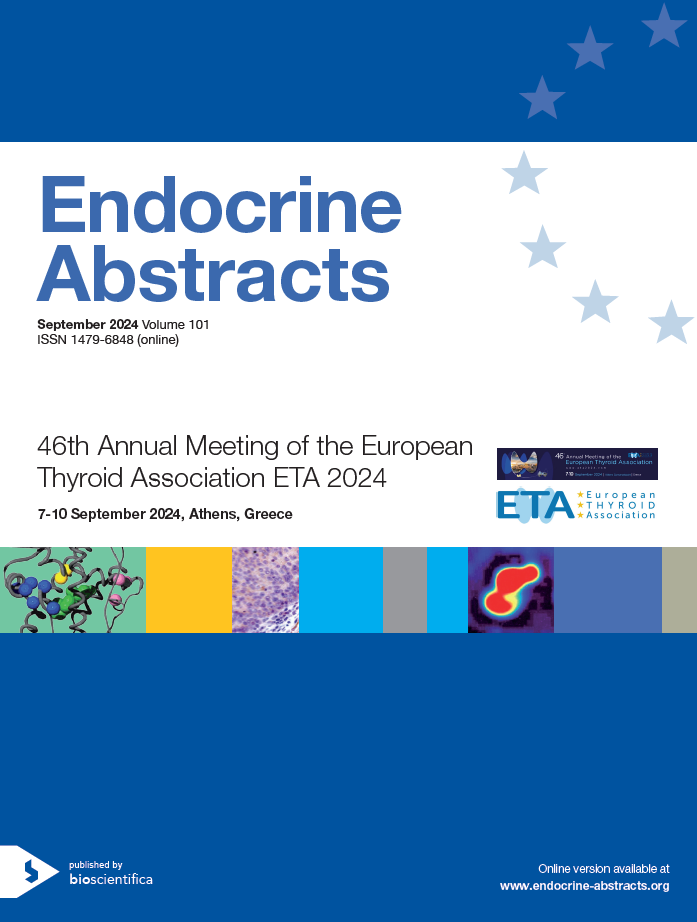
46th Annual Meeting of the European Thyroid Association (ETA) 2024
Poster Presentations
Case reports
ea0101ps1-07-01 | Case reports | ETA2024
Intrathyroidal osseous metaplasia mimicking thyroid nodule suspicious for malignancy in a female patient with graves’ disease- a case report
Askitis Dimitrios , Hatzis Odisseas , Mitrakas Alexandros , Moisidis Ioannis , Anagnostou Eleftherios
ea0101ps1-07-02 | Case reports | ETA2024
Liothyronine and a sudden unexplained death: cause or coincidence?
Bahl Suhani , Taylor Peter , Okosieme Onyebuchi , Stedman Mike , Heald Adrian , Premawardhana Lakdasa , Dayan Colin
ea0101ps1-07-03 | Case reports | ETA2024
Methimazol-induced hepatitis in a patient with graves’ disease
Maghakyan Sona , Aghajanova Yelena
ea0101ps1-07-04 | Case reports | ETA2024
Combined immune checkpoint inhibitor therapy and onset of graves’ hyperthyroidism followed by seroconversion to autoimmune hypothyroidism: a case report
Juul Thomsen Marco , Linding Andersen Stine , Maria Uldall Torp Nanna , Andersen Stig , Carle Allan
ea0101ps1-07-05 | Case reports | ETA2024
Thyroid diagnostic dilemmas
Kumar Jesse , Hyer Steve , Laji Ken , Subbiah Kasi
ea0101ps1-07-06 | Case reports | ETA2024
Differential diagnostic challenges for ophthalmic diseases: a case report
Klet Sanja , Beleslin Biljana , Stojkovic Mirjana , Markovic Bojan , Janic Tamara , Babic Jovana , Ciric Jasmina , Zarkovic Milos
ea0101ps1-07-07 | Case reports | ETA2024
Patient concurrent hashimoto thyroiditis, hypothyroidism and graves orbitopathy
ea0101ps1-07-08 | Case reports | ETA2024
Giant paracardial thyroid ectopy causing graves’ hyperthyroidism. clinical and histological findings
Drieskens Pieter , Schad Arno , De Geeter Frank , Van Huysse Jacques , Sajevets Tatjana , Van Den Bruel Annick , Kahaly George J.
ea0101ps1-07-09 | Case reports | ETA2024
A case of thyrotoxic periodical paralysis in a caucasian subject
Migliorucci Benedetta , Casula Mauro , Latrofa Francesco , Dinoi Elisa



